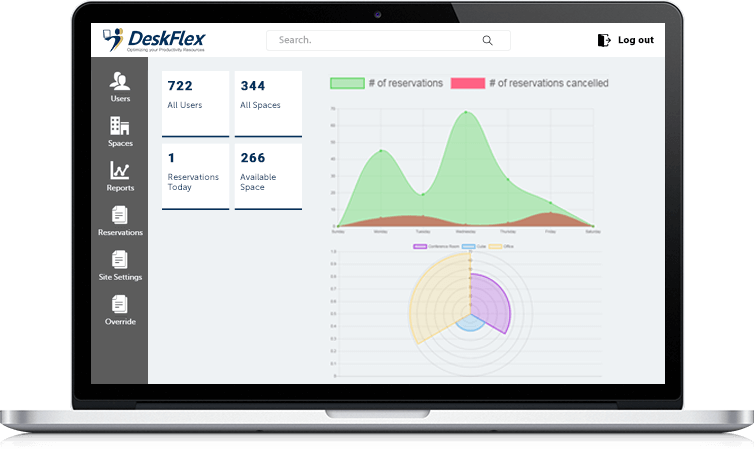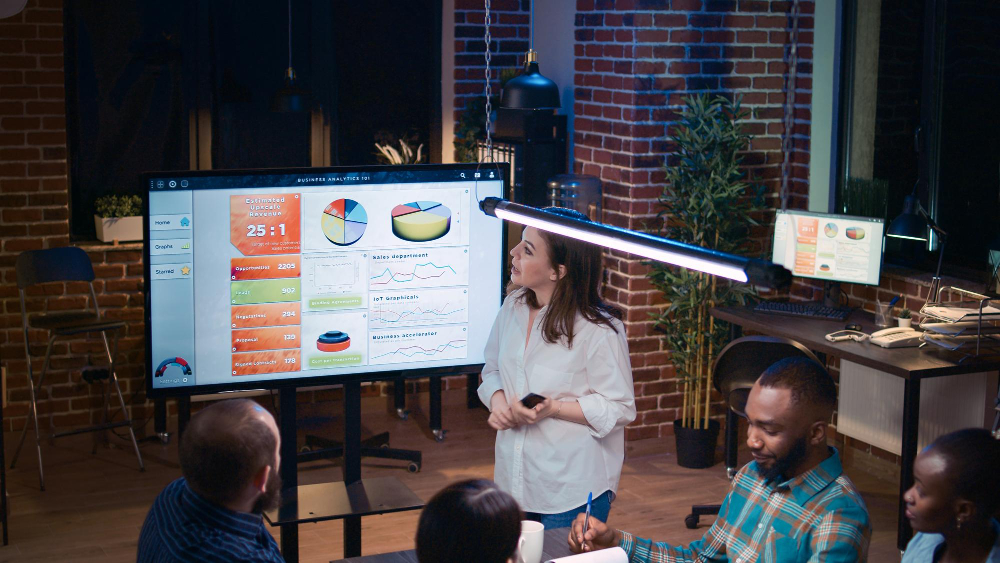Blog

Effective COVID-19 Office space management: Using social distancing software
A decade or so ago, if someone told you that you’d primarily be “working from home”, it’s likely you’d have laughed them out of your office and slammed the door on them! Today, sitting in your home office, you’d smile at that encounter. And, if someone had said the day will soon come when you won’t have an office anymore…you’d probably have called security to deal with him/her. Today, sitting across from a colleague that shares your cubicle, you wonder how that person saw the future!
Making workspace change successful
Those paradigm shifts in how we work have changed how workplace designers and team managers plan, organize and allocate workspaces. However, workspace changes may not be efficient or effective when enforced unilaterally. Here are some positive ways to influence such change.
1) The readiness test:
Before you start breaking down walls and ripping out doors, pause and think if your organization (not just you!) is ready to change the status quo. Change is always hard to accept; but when it pertains to major workspace realignment, it gets harder. That’s because staff usually spend more than half their waking-life in the workplace. If they perceive upcoming change as being unnecessarily disruptive to their lives, you’ll likely receive significant resistance.
2) The consultation process:
To assess organizational readiness to workspace changes, and to positively influence such change, you should engage in extensive consultation with your staff. “Consultation” doesn’t mean presenting employees with a list of options to choose from. Instead, elicit feedback from all levels of staff, and objectively consider each of those proposals in an open and transparent manner.
3) Use communication as an influencer:
Most employees are rational and reasonable individuals. If there are positive aspects to, for instance, reducing the number of offices and converting them to multi-user workstations, get HR, people managers and facilities planners to clearly communicate those benefits to the masses. Holding regular Town Hall-type sessions, and reaching out to grassroot employees through Working Groups might help.
4) The logistics:
Revamping existing workspace layouts, and transforming them into a new concept, won’t happen overnight. You need to plan everything – from architects and engineers, to movers and handymen. You’ll need electricians and IT specialists, painters and carpeting teams…and a whole lot more. The best workspace transformation experiences happen by factoring little things into your plan – like live plants and personalized lighting.
Moving from an office-based layout to open concept workspace may require additional considerations, such as proximity of teams, spaces for meetings, leader and management seating and brainstorming areas. The central idea for success, however, is to consult extensively and plan meticulously!
Life after transformation
Where possible, it may help to lean on workspace planning and allocation technologies to make your post transition work life less stressful. A great example of such technologies is custom 3D floor maps.
When you move from a closed-office layout to an open concept workspace, 3D maps help you visualize what your layout looks like – identifying each pod, desk and communal workspaces. Integrated with corporate communication tools, like Microsoft Exchange/Outlook, these maps are a dynamic, engaging way to view your workspaces. Planners can see which workstations, desks or pods are vacant, who occupies which space, and where there are opportunities to rationalize space – e.g. co-locate teams or reduce wasted space.
While workspace change can be stressful, technologies, such as Room Scheduling and Workstation Touchscreens can also help alleviate some of that stress. And if the change is less stressful, staff will accept it more readily, resulting in greater workplace productivity.



















































 Support
Support  Demo
Demo  Blog
Blog 


